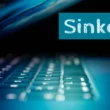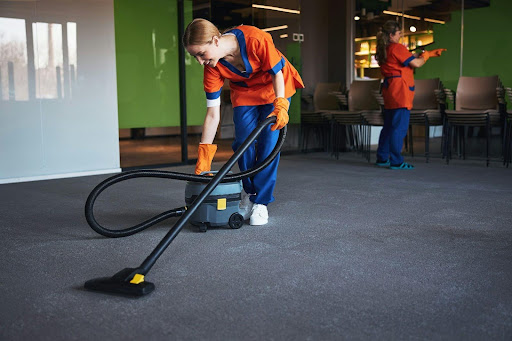When we picture cutting-edge technology revolutionizing the workplace, we usually think of AI tools, remote conferencing, or smart scheduling systems. Rarely do we consider the humble janitorial closet. Yet, over the past few years, the world of commercial cleaning has undergone a silent revolution, and it’s transforming modern offices in ways few anticipated.
From intelligent scrubbers to app-connected carpet extractors, smart cleaning technology is no longer a luxury but a necessity for businesses prioritizing employee well-being, productivity, and sustainability. Brands like SweepScrub are helping usher in this new era, offering commercial-grade cleaning equipment that aligns with today’s high standards of hygiene and operational efficiency.
Let’s explore how this behind-the-scenes transformation is reshaping the places where we work.
Smart Cleaning Tech: More Than Just Clean Floors
At first glance, smart cleaning devices may seem like basic upgrades, larger tanks, quieter motors, maybe some Bluetooth connectivity. But the innovations go far deeper. Modern equipment now comes with AI-powered sensors, automated navigation, usage data tracking, and even predictive maintenance alerts.
This means cleaning staff can now:
- Monitor usage patterns to schedule cleanings at optimal times
- Receive alerts when equipment needs servicing, preventing downtime
- Reduce waste by optimizing chemical and water usage
The result? Higher cleaning standards with fewer resources, less disruption, and measurable environmental benefits.
Why Cleanliness Is No Longer Optional
Post-pandemic, the expectation for office cleanliness has been permanently elevated. Employees returning to the workplace want reassurance that their health and safety are being prioritized. Clean offices are not only visually appealing, they are psychologically reassuring.
According to a study by the U.S. General Services Administration (GSA), workplaces with regular deep-cleaning routines experience fewer employee sick days and higher reported satisfaction with the work environment 1.
The business case for investing in smarter cleaning solutions practically writes itself. Better tools mean better outcomes, not just aesthetically, but in workforce morale, health, and performance.
Office Management Goes Digital, So Should Cleaning
With most office functions now running on cloud-based platforms, HR, project management, even coffee ordering, it only makes sense that maintenance processes should also move into the digital age.
Modern cleaning equipment now comes with:
- Companion apps to track machine location and usage
- Data dashboards to monitor cleanliness across different areas
- Scheduling integrations with building management systems
This digitization helps facilities managers adopt a data-driven approach to cleanliness. Instead of relying on visual checks or manual logs, decisions are backed by real-time metrics and historical performance.
It’s a shift from reactive to proactive cleaning, and it’s proving to be far more efficient and cost-effective.
Automation Helps Solve the Labor Gap
The cleaning industry has faced a persistent labor shortage for years, made worse by the pandemic and rising labor costs. For many building service contractors and facility managers, staffing challenges are now a daily struggle.
Smart cleaning machines, especially autonomous floor scrubbers and extractors, help bridge this gap. A single operator can now manage multiple machines, each performing consistent, high-quality work across large floor plans.
Not only does this reduce staffing pressure, but it also allows cleaning professionals to focus on high-touch areas and detail work, while machines handle repetitive tasks.
Sustainability Gains: Smarter and Greener
Image from Unsplash
Sustainability has become a defining feature of modern corporate culture. More companies are pursuing LEED certifications, publishing ESG reports, and investing in energy-efficient upgrades. Cleaning technology plays a quiet but crucial role in these initiatives.
Here’s how smart cleaning tools help:
- Water-saving modes reduce consumption by up to 70%
- Chemical dilution systems prevent overuse and reduce environmental impact
- Battery-powered machines reduce noise and lower carbon footprints
Government-backed resources such as the U.S. Environmental Protection Agency’s (EPA) Safer Choice program even helps businesses identify products and practices that support healthier indoor environments, an area where modern cleaning equipment increasingly aligns.
Real-World Results: What Businesses Are Reporting
Smart cleaning isn’t just theoretical. Offices, warehouses, retail chains, and universities are reporting measurable benefits from upgrading their cleaning tech.
Some common outcomes include:
- 30-50% time savings on routine floor maintenance
- Noticeable improvements in air quality due to better dust removal
- Stronger tenant satisfaction in shared commercial spaces
- Reduced complaints related to restrooms and common areas
These aren’t just anecdotal wins. With tracking dashboards and integrated sensors, companies can verify ROI through tangible, repeatable data.
Training: The Final Piece of the Puzzle
Of course, no tool is effective without proper usage. That’s why top equipment vendors now provide in-depth training modules, both online and in person. Some even offer virtual simulations to help operators practice before deploying machines in real environments.
With more intuitive UIs and user-friendly software, new hires can get up to speed faster, and experienced janitorial staff can level up their skills. Investing in training is just as important as investing in tech. Together, they build a modernized, empowered cleaning workforce ready to meet today’s workplace challenges.
The modern office is evolving. From wellness-focused layouts to remote-enabled workflows, every aspect is being reimagined for a new era of work. Cleaning, once an afterthought, has moved to the front of the line, and it’s being supercharged by smart technology.
Embracing these innovations isn’t just about looking professional; it’s about fostering healthier, safer, and more productive environments for everyone who walks through the door. And as companies like SweepScrub continue to develop the tools of tomorrow, the silent revolution in commercial cleaning will only grow louder.




